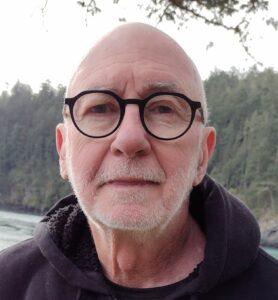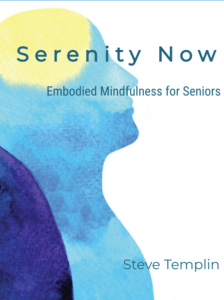Your body is your subconscious mind and is just waiting for you to connect with it. I’ll say more about learning how to listen to your body’s healing language a bit later.
Your body partitions off and stores intense or traumatic emotional energy as a form of protection against feelings that would be overwhelming or incapacitating. This is a very necessary and helpful process.
Since stress and traumatic experiences are an inescapable part of living it’s helpful to have a built in protective mechanism that’s designed to keep us functioning in the midst or aftermath of life’s more challenging events.
Ideally, after a traumatic event is over and it’s safe to slow down and collect ourselves we’d give our bodies a chance to release stored emotional energy and restore our natural emotional and physical resiliency.
This process is ideal in terms of resetting our biological and psychological health after a challenging experience and thereby reducing or eliminating its post traumatic influence.
Unfortunately, all too often this process of naturally releasing stored emotional energy is blocked and we’re left with a traumatic emotional imprint. Over time, we can develop a habit of accumulating more and more emotional energy, the burden of which depletes our emotional, physical, and spiritual resiliency.
Common conditions like high blood pressure, digestive issues, anxiety, and depression top the list of a multitude of problems related to dysfunction of the autonomic nervous system caused by stored or suppressed emotion.
Even though our unconscious habits of mind and body can interfere with these natural healing mechanisms, we still have the capacity to engage this healing potential at a later time.
I’ll share a patient’s healing story.
The Body Tells Stories
Before I relate this patient’s experience I’ll address why an acupuncturist is working with mental or emotional issues, which are usually considered the domain of mental health professionals.
I learned from patients on my therapy table that emotions were often spontaneously released as bodily tension was released, while in a setting that was safe and nurturing. Using acupuncture and acupressure invites relaxation of the body and mind, or I should say, the bodymind.
Chinese medicine acknowledges that the mind and body are in truth one interrelated system and I had a front row seat to see this theory play out in real time in my patient’s bodies.
What I learned was that trauma could often be released from the body, safely and naturally, as we attend to bodily felt feelings, sensations, intuitions or insights, and imagery. It was part of the body’s innate wisdom that most people, especially people with a degree of emotional sensitivity, can learn to do for themselves or loved ones.
My point is that we can help ourselves by learning a new way of relating to and interacting with our body. We can help ourselves and also have the awareness of when to reach out to trained professionals for extra support when needed.
One of the Western therapies that I discovered that readily understood this mind body connection was a process called Focusing that was developed at the University of Chicago in the 1960’s by Eugene Gendlin, Ph.D.
For the purposes of this post I won’t go into depth about Focusing and the research supporting it, except to say that it’s a gentle approach for inviting the body to express what it’s been holding in protective storage to reduce any potential traumatic imprint. I’ll discuss Focusing more thoroughly in a future post.
The Focusing technique offers instructions for how we can tune into our body’s natural capacity for releasing traumatic imprints.
I had been studying the literature around Focusing, experimenting on myself, and felt that it offered potential for helping my patients when emotions would spontaneously arise.
What follows is the recounting of the first time that I used Focusing with a patient. To this day it’s the most memorable Focusing experience I’ve encountered.
As an inveterate doubter, I’ve often thought that the universe went out of its way to give me an experience that I couldn’t negate, ignore, or forget. Thank you, universe.
I was in the middle of a treatment of a very pleasant middle-aged woman when she began to sob. After a short while she mentioned that a painful memory had bubbled up.
I sensed that the spontaneous release of emotion, especially when people were deeply relaxed, was likely the body’s attempt to let go of painful experience and heal.
So, I shared that I was learning a process that can help with painful memories and that if she wanted we could explore the process together. And she said that would be okay.
Here, I’ll briefly recount what happened over a span of roughly 30 minutes.
I acknowledged that what she experienced must have been very painful and asked if it was okay for her to check in and see how that experience felt in her body.
I asked her to take whatever time seemed right and as long as it was okay to pay special attention to the middle of her body and to be open to feelings, sensations, or images because these are common ways the body expresses emotional energy.
She rested for a minute or so, took an extra breath and let it go, and then quietly shared that her emotional pain felt like a dark, hard potato in her solar plexus.
I acknowledged that her experience seemed very interesting and asked if it was okay for her to be with that experience and to be open to whatever might come next. She said that would be okay.
Over the next 30 minutes her experience of the dark, hard potato was becoming incrementally lighter and softer each time that she gently, patiently, and curiously listened to her body telling its story.
I was encouraged by what was unfolding and feeling that this was a process with some intelligence behind it, a process that we could trust. And then she began to sob again. Lots of sobbing and tears that seemed to me to be more of an emotional release, and relief, than suffering.
After a few minutes she became quiet and appeared to be relieved and deeply relaxed. I said that it wasn’t necessary, but if she wanted to share what had happened that I was interested.
She recounted how her inner potato experience became progressively lighter and softer until it became cloud-like and extremely bright. Next, an image of her son appeared, who she shared has tragically died in an airplane crash many years ago.
She recounted that she saw her son’s face and then he spoke to her. He said, “Mom, I love you and I’m okay”.
We Can Learn to Trust Our BodyMind to Heal
That was my first experience of trusting the body’s wisdom to release a traumatic imprint. In this case the emotions centered around loss and grief. Her experience on the table allowed her to finally let go of what she had been unconsciously, somatically, holding onto for many years.
One of my mentors in the Focusing realm, a psychologist priest, called this process of curiously following inner felt experience that leads to greater emotional ease, the gift of grace.
The main reason that I’ve used the Focusing process over the years, and why I’m sharing this story, is because the process is so natural and can be learned with some practice.
The process wasn’t invented, it was observed in clients who were successful in counseling. These people had a natural ability to notice what was happening in their bodies as they discussed emotional issues. And what’s exciting is that most people can learn Focusing even if they’ve had a habit of living in their heads and ignoring their bodies.
Thanks for reading this far. My next post will introduce you to Focusing, its history, some supportive research, and how to learn the practice.


 Steve is a retired Doctor of Oriental Medicine, Acupuncture Physician, and HeartMath Trauma-Sensitive Certified Practitioner with over 35 years of clinical experience in the fields of Energy Medicine, Energy Psychology, and Biofeedback.
Steve is a retired Doctor of Oriental Medicine, Acupuncture Physician, and HeartMath Trauma-Sensitive Certified Practitioner with over 35 years of clinical experience in the fields of Energy Medicine, Energy Psychology, and Biofeedback. 